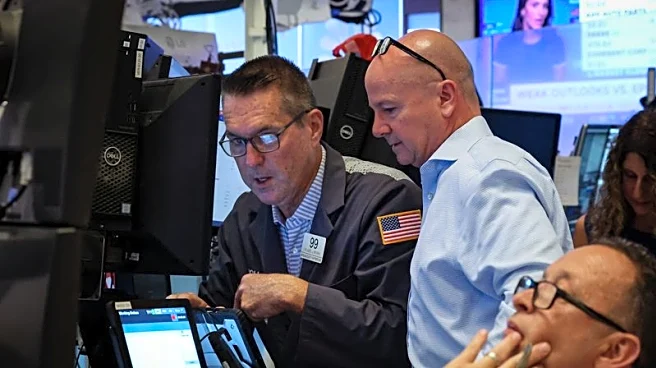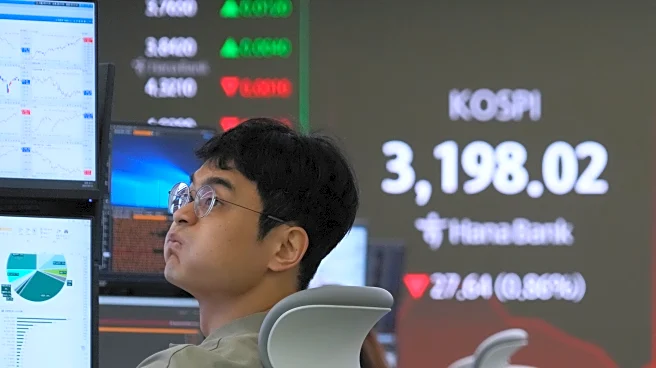What's Happening?
Galaxy Digital's latest report highlights a surge in leverage within crypto markets, reaching levels reminiscent of past bull markets. The report notes that crypto-collateralized loans expanded by 27% last quarter, totaling $53.1 billion, driven by high demand in decentralized finance (DeFi) lending. This increase in leverage has led to significant market stress, as evidenced by a recent $1 billion liquidation in crypto derivatives following Bitcoin's price drop from $124,000 to $118,000. Analysts suggest this was a healthy profit-taking event rather than a market reversal, but it underscores the fragility of markets with high leverage. Additionally, the report points out stress in Ethereum's borrowing rates and a widening gap between on-chain and off-chain dollar markets, indicating potential liquidity mismatches.
Why It's Important?
The rise in leverage within crypto markets poses risks of increased volatility and potential market instability. As leverage builds, the likelihood of large-scale liquidations grows, which can lead to rapid price swings and investor losses. This situation highlights the need for careful risk management and monitoring of leverage levels by market participants. The stress points identified by Galaxy Digital, such as borrowing rate discrepancies and liquidity mismatches, could exacerbate market volatility if not addressed. Institutional investors and traders must remain vigilant and prepared for potential market disruptions, while regulators may need to consider additional oversight to ensure market stability.
What's Next?
The crypto market may experience further volatility as leverage levels remain high. Traders and investors will need to monitor market conditions closely and adjust their strategies accordingly. The upcoming speech by Jerome Powell at Jackson Hole could influence market sentiment and interest rate expectations, impacting crypto prices. Additionally, the ongoing demand for institutional investment and ETF inflows may provide support to the market, but participants should be cautious of potential liquidity crunches. As the market evolves, stakeholders may seek to develop more sophisticated risk management tools and strategies to navigate the complexities of leveraged trading.













